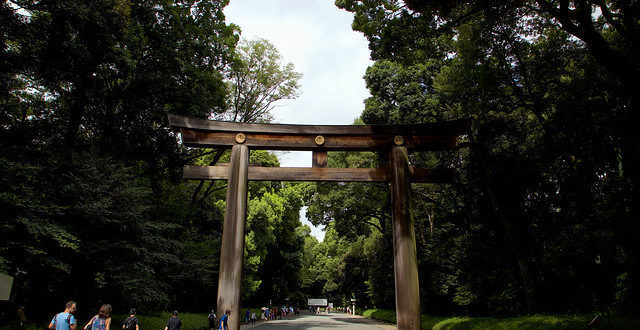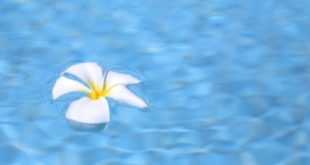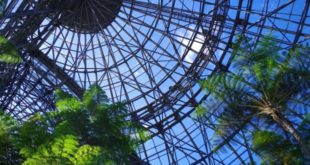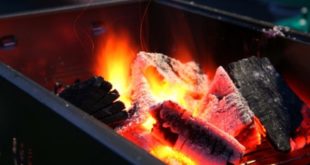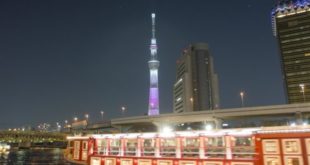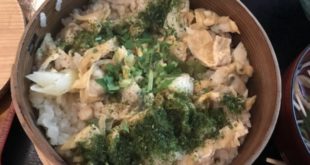Meiji Jingu is a shrine located in a solemn green forest in Tokyo, a big city.It is a spot where not only Japanese people, but also foreign tourists visit there as well.There are general shrines and prayers, but there are many places where you can’t just visit the shrine, and you can enjoy it with your family and couples.
In Meiji Jingu, there is a power spot where people can give healing and purification.Let’s take a different power from each spot in the green and get home.There are many facilities where you can enjoy shopping and meals around the area, so it’s fun to visit Meiji Shrine and visit Meiji Jingu Shrine.This time I will show you various faces of Meiji Jingu Shrine.
Contents
- 1 Basic information on Meiji jingu Shrine
- 2 The charm of Meiji Jingu and the Highlights
- 2.1 Various benefits such as love fulfillment and business prosperity
- 2.2 Natural healing power spots
- 2.3 Events events and events where happiness is felt by the side of the event
- 2.4 Solemn “Otorii”
- 2.5 The symbol of married couples : “Sanboku Kusunoki”
- 2.6 “Wine barrel”
- 2.7 88 degree of “turning angle and Masugata”
- 2.8 Hidden items in the temple [Heart of Happiness]
- 3 Meiji Jingu
Basic information on Meiji jingu Shrine
Telephone : 03 – 3379 – 5511
Time of worship : The time is different depending on the month because it opens with the sunrise and closes according to the sunset.
Reception time : The same as the time of worship.
Reception time : The same as the time of worship.
Nearest station : Meiji-jingumae (Harajuku) Station / Harajuku Station
Official site : http://www.meijijingu.or.jp/
Meiji-jingu Shrine is
Meiji Jingu is also known for the number of visitors to the shrine every year.The shrine is full of sacred atmosphere surrounded by beautiful forests. You can also ask for various prayers like other shrines, and the first Omiya-mairi, the purification of the bad year, and so on can also be done at Meiji Shrine at Meiji Shrine in 7 5 3.
Meiji Jingu enshrines Empress Dowager Akinori and Empress Dowager Akinori.It is a shrine built on November 1, 1920 in 1920.Speaking of Meiji Jingu, the forest of Tokiwa, which overflows with greenery, is an artificial forest made by planting 1 trees of 100000 trees donated from all over Japan at the time of the foundation of the shrine, and planting 1 trees.The area is 700000 square meters, and now it grows into a beautiful forest, and it is a place where people can feel the hearts of the people.
Meiji Jingu consists of a garden with a sacred atmosphere, a Shotoku Memorial Art Museum and a large number of sports facilities, and a Meiji Kinenkan, which is used for weddings and other occasions.In the Meiji Jingu Kaguraden, a solemn Kagura dance is offered with a miraculous event.Many visitors visit the shrine to pray for the safety and physical safety, to pray for evil, to pray for the passing of evil, and to pray for business Hanjo.
History of Meiji-jingu Shrine
On July 30, 1917, Empress Dowager Akinori died on April 11, 1914 and Empress Dowager Akinori died on April,. 1912 1914.Later, the people who prayed for the worship of the spirit became louder, and in 1920, Meiji Jingu was built in 1920.Various sites were mentioned as a place of enshrinement, but the area in Yoyogi was deeply connected with your Majesty’s garden, so it was decided in this place.
Before the charge, the residence of the Kato family, who was a vassal of the Tokugawa family and was a feudal lord, was also known as a quiet place where the greenery was known as a quiet place, and was also favored by Empress Akinori and Empress Dowager Akinori.
The Edo period, which lasted for a long period of time, came to an end, and the Meiji period, the beginning of civilization enlightenment, came to the visit.New politics began to emerge, and various laws and systems were established to form a foundation for the foundation of modern Japan’s modern Japan.The Emperor Meiji, who was in the center, passed away in 1912 in 1912.
The Empress Dowager Akinori, who was dedicated to the modernization of Japan with the Meiji Emperor, was established with several schools for the sake of the public (women) as representative of the current “Ochanomizu University,” and was also greatly contributed to the establishment of the Japanese Red cross society, such as the “Akinori Empress Dowager’s Fund.”.
A Japanese woman is a person who became a person to enter into a society.
Therefore, the Meiji government will honor the 2 people who have made a big contribution to Japan in the new era, and at the same time will implement the plan to create the “Company” with the permission of the Emperor Taisho.The construction work of Meiji Jingu started in 1915, following the death of Empress Akinori, in the next year, in 1915.This construction period was 5 years, and 13000 people were engaged in this project.And on November 1, 1920, it was finally completed on November, 1920.
Meiji Jingu access parking lot
When you go to Meiji Jingu, there are 6 closest stations if you go by train.In order to go to Meiji Jingu, the stations in Harajuku, Meiji-jingumae, Yoyogi, Kita-sando and Sangubashi are convenient, but the entrance to the precinct is different depending on the stations you use, so you should check the location of each station before you visit.
– The JR Yamanote Line “Harajuku” is convenient if you enter from the Minamisando.After you exit the Omotesando exit at Harajuku Station and cross the Jingu Bashi, you’ll see the south entrance.
If you enter from Kita-sando, take the Tokyo Metro Fukutoshin Line to Kita-sando.If you go out of the station and go along Meiji Dori and cross the JR line, there is a Kita-sando.
– Nishisando is a place where you can see a view like a Western-style garden.It is convenient to get there from the Odakyu line’ Sangubashi.’.Just go to the right to the right after you get out of the station and go up the slope to the right to the right, you’ll find the entrance to the west entrance.
Meiji Jingu is one of the most popular shrines in Tokyo, and its site is located in the area where you can see Yoyogi from Harajuku.Many people, including the foreign tourists, have visited the shrine to visit, receive and visit to the shrine regardless of the weekday or holidays.However, when you come here by car, there are many popular spots around the area, so it may be difficult for you to find a parking lot on holidays.In the meantime, I’ll introduce you some convenient parking lots.Please choose wisely according to the purpose and so on.
・ Meiji Jingu first and second 3 parking (first sixtieth series, second thirtieth series, third thirtieth series)
The convenient place for visiting the shrine is the free parking lot in the Imperial Palace.
This is a free parking lot located on the grounds of Meiji jingu Shrine.
The parking lot is free of charge only for the facilities users in the Imperial Household and visitors, and the visitor’s parking time is up to 2 hours.
However, it may be better to use an outside parking lot because it is likely to be crowded during the holidays, events and Hatsumode, so there are special regulations.
Number : (first) 60 units, (2) 30 (first) and (3) 30 (2)
Form : Flat travel parking
Time : 06 : 00 – 17:00
Fee : Free (up to 2 hours)
・ DP Espoo War Omotesando (69 units)
If you go to Meiji Shrine for shopping or eating and drinking, it will be the No. 1 convenience.
You can park the middle roof car, and you can reserve a parking lot as well.
It is a 7 minute walk to the Minamisando exit and a mechanical parking garage at the Rallauren Omotesando Omotesando.
Please be aware that the high roof vehicle is not allowed.You can reserve a 100% compartment by using a parking reservation service.
Number : 69 units
Form : Mechanical Parking
Time : 9 : 00 to 23:00
Price : (normal fare) : 60 minutes / 600 yen, 20 minutes / 200 yen, (maximum rate) 1800 yen (holidays) 2400 yen, (23:00 – 9:00) maximum 500 yen
Note : Parking size is 1.8 m tall, 5.3 m long, 1.95 m wide, 2.3 t
・ Trust Holdings Kyocera Harajuku Building parking lot (143 cars)
It is a parking lot located in the Kyocera building located along the Meiji Dori close to the Harajuku intersection.
The flat cabin is a bit expensive for parking, but the mechanical type is cheaper for a long time.
However, you can only park within a car height of 1.5 m.
You can reserve a 100% compartment by using a parking reservation service.
Number : 143 units
Form : Mechanical Parking + Flat Parking
Time : 24 hours
Price : [Flat Plan normal rate (8:00 – 22:00), 30 minute 500 yen, (22:00 – 8:00), 60 minute 100 yen, [Machine normal rate] (8:00 ~ 22:00) 30 minutes 500 yen, [Machine type maximum rate (8 ~ 22), maximum 3000 yen, [Machine type maximum fee (00 ~ – 00), [Machine type maximum rate (maximum value : ~], [Machine type] – operating hours outside the business hours), [Machine type], [The maximum 1500], and [Machine type] is not allowed to be entered. 8:00 22:00.
Note : The mechanical parking size is 4.8 m in total length, 1.8 m in full width, 1.5 m in total height, 2.0 t in weight, and 0.12 m in minimum.
・ Shibuya Yakuten Mae Public Parking (650 units)
It is the biggest parking lot closest to Yoyogi Park.
It’s a public parking lot with a large public car, so it’s open for 24 hours, so it’s a parking lot that can be used very conveniently.
The ordinary fare is cheap because of the public parking, and it is a good deal for a short parking.
However, the maximum fee is not set on holidays, so you need to be careful about parking for a long time.
It takes about 10 minutes by walking distance to the south entrance of the shrine.
Number : 650 units
Form : Underground parking lot
Time : 24 hours
Price : (ordinary fee) Monthly to Friday : 8:00 to 00:00 30 minutes 260 yen, 00:00 to 8:00 30 minutes 200 yen, Saturday and Sunday : 8:00 to 00:00 30 minutes 310 yen, 00:00 to 8:00 30 minutes, 200 yen, (maximum price) Month to Friday, maximum 2600 yen 12
Note : Parking size is 2.1 m height, 2.3 m, length 6 m, weight 4 t, minimum ground height 13 cm
The charm of Meiji Jingu and the Highlights
There are a lot of highlights at Meiji Jingu.Among them, Kiyomasa no Masai, which is said to have been dug by Kiyomasa KATO and Kiyomasa KATO, is one of the popular spots.In the garden, it is famous for its beautiful iris in June every year, but it is a place where you can feel a different nature from the four seasons.
In the most northern area of the temple, you can see the treasure house.This is a good place to visit a place known as one of the most famous power spots in Tokyo.However, it is only on Saturdays and Sundays that you can see the treasure house, so please be careful not to make it empty.Other than that, there are a wide range of festivals and events, such as the Dohyo-iri of sumo Yokozuna and the festival of children.
The admission of Meiji Jingu Shrine is free, but the garden of Meiji Jingu Shrine is paid for.I’d like to pay 500 yen for the maintenance and cooperation of the Imperial family.In addition, in Meiji Jingu Gyoen, the operating hours vary depending on the season, from March to October, from 9:00 to 16:30, on Saturday and Sunday at 18 until 00, and from 9:00 to 16:00 during November through February.And as for the treasure house, we need 500 yen as a facility maintenance cooperation fund, so we ask you to cooperate with us.
Various benefits such as love fulfillment and business prosperity
He was known as Emperor Meiji and Empress Dowager Akinori, who were enshrined at Meiji Jingu Shrine, and was known as a couple who was very close to him during his lifetime.Therefore, it is said that if you go to Meiji Jingu, there is a good luck of love fulfillment and good luck luck.In addition, it is famous as a shrine that offers various benefits such as business prosperity and acceptance of passing.
Meiji-jingu Limited Express
This is an original goshuincho with a simple and elegant style.The lustrous fabric is overflowing with a high-class feel.At the’ Kaguraden’ on the right side of the main hall, there is a place where you can find the place.So you can buy it with 1000 yen (tax included).
Many people who wish to give a seal of Goshuinin are visited on holidays and so on.At that time, an extraordinary place will be set up, so please check it.Recently, there seems to be a boom in the boom of Goshuinjo, and it seems like the place where the gift is very crowded is quite crowded.It may take a long time to get a seal in the afternoon of the holidays, so I recommend the weekday morning if possible.
What I am concerned about is the design of Goshuinin.It is a very simple design, and I can feel the dignity of a shrine representing Japan, but I sometimes notice it when I look at the seal of Goshuin.The letters of “Miya” in Meiji Jingu are different from those in general characters.In Meiji Jingu, kanji characters with the characters “No” in all notations such as official HP, Amulets, Omikuji, etc. are used.
The fortune note
If you look at Omikuji at Meiji-jingu Shrine, you’ll think about it.There is no notation in Omikuji of Meiji Jingu that there should be Omikuji, Yoshi and bad luck.Instead, the “Tanka” written by Emperor Meiji and Empress of Emperor Meiji was written.
There are a number of poems in the Meiji Emperor and the wife of the Emperor, and there are 30 poems that are suitable for the Omikuji, and they are written on the Omikuji and written on the Omikuji.I can’t read that. I can understand the contents properly because it has a commentary on the modern language.
Then why don’t you rank the fortune slips?The reason for this was that they wanted to make Omikuji different from other shrines.Before the war, Omikuji was not handled at a national shrine.After the war, Meiji Jingu was no longer the state, so Omikuji was issued.At that time, the Omikuji style of Tanka style will be completed.
The bell “Kodama”
The bell “Kodama” made from the sacred tree of Meiji-jingu Shrine
It is almost 100 years since Meiji Jingu Shrine was built.There are many trees that have been cut by wind or rain, or have had to cut trees due to a long period of time.
Kaizenki bell is used as an amulet as a charm for wooden bell.The tone of the bell is very cute, and the wood and color are different depending on the wood used.Why don’t you try to get the first one, the bell bell, without the same thing as the one in the world?
“Reciprocal defense”
Sowa-protection is a lucky charm that is one of the 2.It is an amulet that is created after the husband and wife Kusunoki which is also a sacred tree of Meiji Jingu.Tsuma Kusunoki refers to the 2 camphor trees that were presented at the time of Meiji Jingu Shrine’s establishment.The harmony protection is soaked with the aroma of the husband and wife Kusunoki, and the good fragrance of camphor is floating just by wearing it.It is an amulet that is blessed with the safety of the family and the good luck of the married couples.
Natural healing power spots
It is famous for its many guests of Meiji Jingu and New Year’s first visit to Japan, but it is also known as one of the best power spots in Tokyo.It is especially a spot with strong power, and it has a big effect, but it may suffer negative effects if you don’t pay attention to it.
The power you receive at Meiji Jingu Shrine has a healing and purification, and the relationship between the men and women’s men and women has the best effect on the healing effect.In terms of the purification, the power to increase the mental power and to renew the life of a new one becomes apparent.Just walking on the woods of Meiji Jingu, the power of the trees helps purify the mind and body.
Spring water well “Kiyono Masai”
“Kiyo Masai no Mikoto” is also well-known as a strong-luck spot.It’s a well of spring water in the garden, and the wells in the spring water type are very rare in the city.As it was introduced on various media, it is so popular that the numbered tickets are distributed during the time when many people gather, such as the first visit to the New year’s day.This place was originally owned by the Kato family.
This well is a well that is believed to have been dug by Kiyomasa KATO who was also known as the god of civil engineering.The water temperature is about 15 degrees Celsius for 1 years, and the average 60 liters of water per minute seems to gush out without interruption (Tokyo survey).It is well known for the famous spring water in Tokyo.
There is something you need to be careful about when visiting Kiyo Masai.Kiyo Masai is considered to be the location of’ Kanko,’ which is clearly divided into onmyo.It is usually a strong purification effect by boiling water, but please be aware that it becomes easy to get a bad feeling when you go to the sunset or rainy day where the shade is full, so please be careful.
Clean water has the power to calm down.I hear that you will get more lucky if you wait for a mobile phone, so I’d love you to visit it, so how about 1?
Tortoise shaped stones “Turtle Stone”
The new power spot in Meiji Jingu Shrine is Turtle Stone.It is a large rock that is located in front of the pond and sits in front of the pond when you go to the treasure hall from the west exit and go to the treasure hall.It is a normal rock at first sight, but it looks like a big turtle when viewed from different angles.It is a must-check for a turtle, lucky stone, a symbol of longevity and luck, and a lucky stone.I hear that if I wait here, my fortune will rise.
Events events and events where happiness is felt by the side of the event
At Meiji Jingu, various formal festivals are held throughout the 1 years.We pray for the happiness and the peace of the world and the peace of the world with formal festivals such as the “Monthly Festival” and the “Omiishi Matsuri.”.
Pre-zen-Raising
Surrounded by a rich forest in the precincts of a large Meiji Shrine, the bride and groom are guided by the Shinto priest and the Shinto priest, and the bride and groom are very solemn and sacred, so it is a very solemn and sacred atmosphere.
The way you walk slowly with your family, relatives and loved ones is the scene of a beautiful wedding ceremony in Japan.At a Shinto shrine in a beautiful traditional shrine in Japan, you can enjoy a great time while looking for a garden with a beautiful view.
7 5 3
One of the passing ceremonies for life that has been handed down to the Japanese people since ancient times is 7 5 3.At Meiji Jingu, there are also occasions to pray for 7 5 3 visits at any time.Thank God for the healthy growth of your precious children and pray.During the seventh fifth third period (from October to November), you can also get a souvenir that children love.
Spring Big Festival
In the spring festival, various festivals are offered.You can get to touch a history of traditional culture that you can’t see easily, such as traditional Japanese performing arts such as gagaku, Noh, kyogen, nagauta, and gagaku.You can see it for free, so let’s visit it with a comfortable feeling.
Enshrinement Memorial festival
It is a memorial festival to commemorate the day of the enshrinement on November 1, 1920.It is one of the memorial ceremonies held every year.In this memorial festival, “Yoyogi no Mai” (The dance of Yoyogi) and Meiji Jingu original shrine are performed by Miko.In addition to the dance, Japanese traditional dance, such as Kyogen (traditional Japanese dance) and Kyogen (traditional Japanese dance), can be seen as well, so the festival has become a popular festival among foreigners.
Festival Dolls Thank you
In Meiji Jingu, “Ningyo Thanksgiving” (Doll Thanksgiving) is held every year to express appreciation for the dolls.I can’t easily dispose of dolls that I have been taking care of for a long time.You can pay the dolls that you have been spending with your family like a family of gratitude.By the Shinto priest, the exorcism of the doll is carried out solemnly.Anyone who has a doll can participate in it.
Solemn “Otorii”
At the entrance to the south entrance is a large torii, and its dignified figure is exactly one of the buildings that represent Meiji Jingu Shrine.It is a torii with a height of 12 m, a column of 9.1 m, a column diameter of 1.2 m, a length of 17 m, and its weight of 13 t.This Torii is known as the torii which is the largest in Japan.Standing in front of the Otorii, you can feel the mysterious atmosphere like entering a sacred place from now on.
The first Otorii was damaged due to lightning in 1966 (1966).The present Otorii is the second torii, and it was rebuilt in December, 1975 in December, 1975.The cypress used in the current torii is made in Taiwan, and it is said that it was carried from Taiwan by the wonderful cypress which was 1500 years old.
Japanese cypress trees that were so large at that time were not available in Japan.On the torii, you can see the “16 leaves 8 heavy chrysanthemum” which is a crest of the Imperial family.The pilgrimage way through this Otorii and passing through the south entrance is a strong zone for expectations of good luck.
The symbol of married couples : “Sanboku Kusunoki”
The 2 camphor trees are standing up in front of the hall of worship.Because it looks like a couple is close to each other, good luck, married couples, family safety, and other benefits can be enjoyed.After visiting the hall of worship, stand in front of the husband and groom, and bow toward the hall of worship and bow.Then it is said that there is a good fortune.
The 2 camphor trees that were presented at the time of Meiji Jingu Shrine’s establishment in 1920, and the camphor trees that came to the throne in 100 years came to the end of the year in 1920.Because the friendship between the Emperor Meiji, Empress Dowager Akinori and Empress Dowager Akinori, was very good, it has been popular as a symbol of marriage, married couples, and family safety.
Among the power spots in the precincts of Meiji Jingu, it is one of the most popular spots.When I look at the couple’s kusunoki, the branches of the big 1 trees stick together and look like a big tree.Before and after the worship of the main hall and the main shrine, please join the sacred tree and pray for good luck.
“Wine barrel”
A dedicated sake barrel that is often seen at a regular shrine.The same scene can be seen at Meiji Jingu, but the wine barrels are also offered separately.It was presented to the Meiji Emperor who was fond of wine, from the famous production place of wine in Bourgogne region in France, and from the breweries in Japan.
The gentle coexistence of Japanese and Western is a generous expression of the Meiji Shrine.This is one of the most popular sights focusing on young people and tourists.
Emperor Meiji was born as the second prince of Emperor Komei.He is famous for his interest in Western culture and as a pioneer in actively incorporating Western culture into Japan.There is also an anecdote about the beard of the Emperor Meiji.
In Japan, there was no culture of growing beard, but the emperor was able to express the western culture by extending his beard.On the opposite side of a wine cask, a common sake is also offered.You can see the sake barrels of wine and sake at the place where you go straight away from the Otorii.
88 degree of “turning angle and Masugata”
derived from Suehiro
Walking along the way toward the main hall, there is a good luck spot hidden along the way.It is a very ordinary turning angle.This corner is called “Masugata”, but its angle is 88 degrees rather than 90 degrees at right angles.”Masugata” is attracting attention because it is a corner where two lucky “8” are lined up.It is a spot that doubles the best luck by passing through the lucky turning corner from the arrival and returning to the shrine.
Hidden items in the temple [Heart of Happiness]
I think there are many shrines called sacred Places and Sacred places. Many people have preconceived notions.However, the Meiji-Jingu Shrine, which is a representative of the shrine, can be seen in many places where it cannot be said that it is very similar to the shrine.
The heart mark and the heart mark on the gate and the wall of Meiji Jingu are very cute, aren’t they?If you don’t look around closely, it’s difficult to understand, so please check the gate and the wall thoroughly.Looking for heart marks at Meiji shrine, it is quite popular.
Hidden hidden items called “Heart of happiness” are hidden everywhere in the gates, threshold, and walls of Meiji Jingu Shrine.It is a plan unique to Meiji Jingu which is famous for the fulfillment of love.A large number of people have come to see the “Heart of Happiness”, and many of them are visiting a lot of women in marriage.Let’s go to Meiji Shrine to find a cute happy item, “Heart of Happiness,” which will increase the luck of love every time you find it.
Meiji Jingu
The shrine is a solemn shrine where Meiji Jingu Shrine, Meiji Emperor Akinori and Empress Dowager Akinori were enshrined in 2020 after the establishment of the shrine in 100.It is located in the best location in Tokyo, and there are many places in the area where young people such as Harajuku and Yoyogi Park and their families are crowded with their families.
The Meiji shrine is located in the forest of the city, but it is full of attractions, and it seems to be rooted as a place for people to rest other than the place of worship.It is the place where you want to go when you want to escape from the hustle and bustle of the city and soak in the hot time.The famous power spots are scattered in the precincts of the temple, and the smiles of the people who visited the shrine, and the Empress Dowager Akinori and Empress Dowager Akinori are also happy to see the smile of the people who visited the shrine.
 toptrip
toptrip
